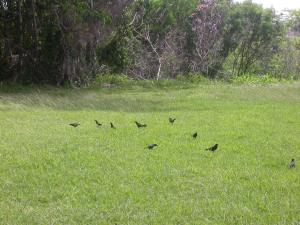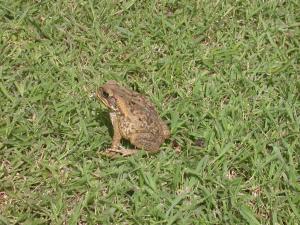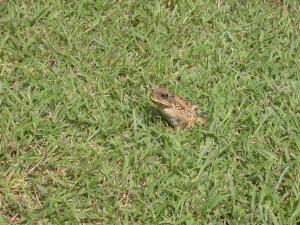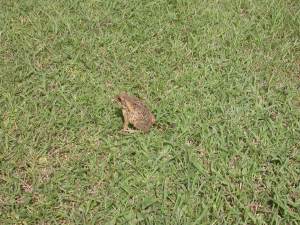Blackbirds are to be found all over Barbados, and they move in flocks, so it would be unlikely for you to see one bird by itself. They are just about 8 inches from the tip of the beak to the tail and have a varied appetite for insects, small frogs, lizards and even giant african snails. I sit on my deck and watch them moving forward like a little army, s they delicately toss aside leaves to reveal a possible delicacy sheltering underneath from the sun and waiting to become blackbird lunch.
unlikely for you to see one bird by itself. They are just about 8 inches from the tip of the beak to the tail and have a varied appetite for insects, small frogs, lizards and even giant african snails. I sit on my deck and watch them moving forward like a little army, s they delicately toss aside leaves to reveal a possible delicacy sheltering underneath from the sun and waiting to become blackbird lunch.
What we all know about blackbirds is that they are noisy. And since there are always a lot of them together, the noise is quite noticeable. They love to nest in immortelle trees, and if a cat should venture forth in their direction or something startle them, the cacophony of sound as the birds rise from the tree as one is quite startling.
Blackbirds can be quite aggressive when they are nesting, and if you get too close, whether accidentally or otherwise, they will dive bomb you close enough that the wings may touch your head. I have seen them dive bomb one of my cats too, who was minding his own business and not the least bit interested in them, but was traumatised for years afterwards and ran when any bird flew too close to him.
I like to watch the blackbirds in flight too – their tail both rudder and brake. As they come
into land, the tail dips down hard like the flaps on a plane, and when they in full flight, the tail is more vertical and serves as a rudder. Quite fascinating to watch. And if you see what looks like slightly larger and more slender sparrows mixed in with the blackbirds, chances are those are the female blackbirds that are actually dark brown in colour and of a similar size as the males.
Rest assured, male and female are always busy.








